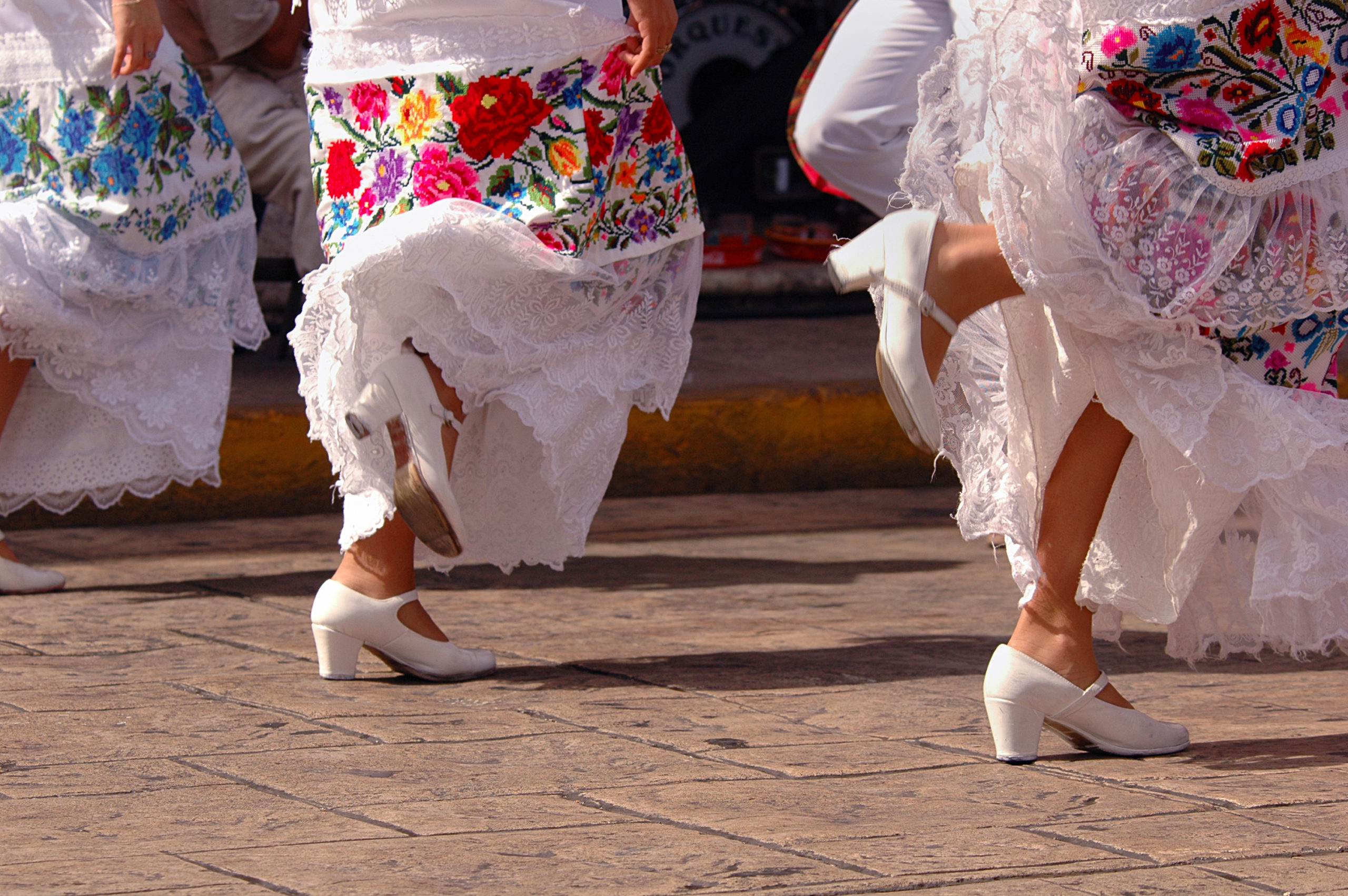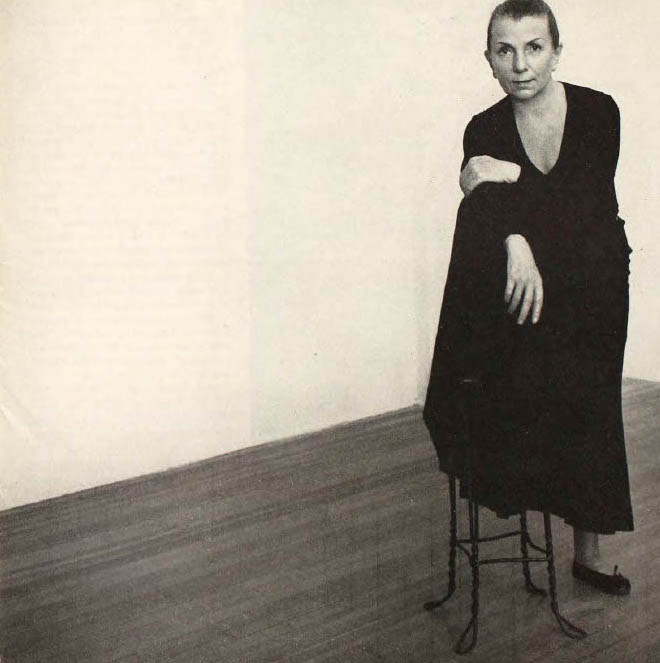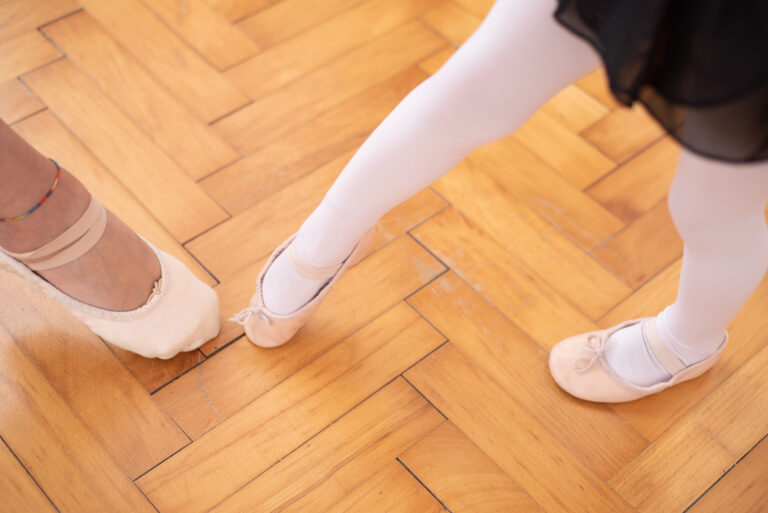
When we think of the many ways that we can celebrate each unique culture, dance is usually near the top of the list. And so, learning a variety of Latin dance styles is both a fun and an enlightening way for you and your students to explore the richness of Hispanic history and culture.
Many Latin American social dances have evolved from the mixing of African, Indigenous and European musical and dance traditions in Latin America and the Caribbean. And over the past century many of these fusion dances, such as merengue, cumbia, mambo, son and rumba, have migrated to the U.S. and have enjoyed great popularity, laying the foundation for the well-recognized social dance, salsa!
In honor of National Hispanic Heritage Month, let’s take a closer look at three popular Latin American social dances that you can teach your students ¡ahora!
Merengue
Merengue originated in the Dominican Republic and was declared an Intangible Cultural Heritage of Humanity by UNESCO in 2016. The dance originated in a rural part of the Dominican Republic and was considered “immoral” by the general population. However, it came to national popularity under dictator Rafael Trujillo (1891–1961), who elevated it to the country’s national music and dance. From the 1960s onwards, merengue began gaining popularity in the U.S. Over the past century, however, the instrumentation has changed several times. While some still dance merengue in a tight partner hold, it is not uncommon for it to be danced apart or even alone with the arms moving alongside.
When teaching merengue, bear in mind that the movement is quite fast in tempo. The basic step is from right to left on each beat, in a march-like movement with hips moving side to side freely (with a little bit of exaggeration). The arms are bent at the elbow and move in opposition to the feet, as done naturally when walking. The simplicity of the steps and lively music with a clear, consistent beat make it easy for anyone to join in.
Cumbia
There are many regional adaptations of cumbia throughout Latin America, and its broad popularity across the continent has positioned it as the dance that unifies Latin America. Cumbia is also commonly danced at social gatherings among the Hispanic/Latinx community in the U.S. Because of its widespread popularity, its origins are often misidentified with countries such as Mexico, when cumbia’s origins are actually in Colombia, where it is the national dance. Cumbia developed on Colombia’s Caribbean coast, where it was originally an African courtship dance. With time, the cumbia evolved and fused with European and Indigenous instruments and dance steps. Selena, the famed American-Tejano singer, helped redefine the musical genre by incorporating cumbia into her live shows.
Cumbia is rarely taught in a formal setting, however. And you may not even find classes that teach it, as the style is mainly passed on by family and friends. But the moves are still teachable, which also makes it simple for your students to learn. The movement is relaxed in tempo and is usually danced either with a partner or alone. Dancers mark pauses on beats 4 and 8 with a tap of the foot. The feet do not move forward and backwards (as in the mambo step that characterizes salsa), but more side to side. One basic pattern is going right “step together, step touch,” repeated by “step together, step touch” to the left. Another common cumbia step is done in a circular open style, where dancers turn side to side and perform a “kick-ball-change,” followed by a step, repeated every 4 beats on each side.
Salsa
“Salsa” is an umbrella term that was created in the 1960s to describe an American, homegrown Latin style of music that is a fusion of Afro-Cuban, jazz and other Latin music styles. Rhythms such as rumba, mambo and son, among others, are all part of the salsa family. As the music became fused and developed into what we now call salsa, a new dance phenomenon evolved that incorporated a fusion of various Latin dance steps (for example, the basic mambo step) with American influences, including tap, swing, jazz and ballroom.
From the 1980s, famed dancer Eddie Torres began standardizing and naming the repertory, making it easier to learn the steps and teach them in studios. Since then, this dance style has gained popularity all over the world—including in India, Korea and the United Kingdom. Today there are several international salsa dance competitions, including the World Salsa Summit held in Miami. However, in the ballroom world, salsa is still deemed a “social dance” and is not included in the five international Latin competition styles (Cha-Cha, Samba, International Rumba, Paso Doble, Jive). On television in 2008, the ballroom competition program “Dancing with the Stars” added salsa to its competition roster.
With so many influences and such a wide geographic reach, many different ways to approach the movement emerged. For example, New York–style salsa is danced on the second beat using smooth and controlled movements with more complicated footwork. Los Angeles–style salsa is flashier and danced on the first beat using more dips, drops and tricks.
If you’d like to introduce Latin American social dances to your dance class, here are five top tips from Sarita Streng, co-producer and co-director of the documentary film La Salsa Cubana, and Latin American–dance instructor in Albuquerque, New Mexico.
1. Teach your students about the history and culture of these dances to add a deeper dimension to the experience and to show respect for the art form.
2. Help your students tune in to the music and learn what the rhythms for the instruments and musical arrangements are. This will inform the dancers’ timing and how they connect their dancing to the music. You could also recommend that your students spend time listening to the music outside of class, too.
3. Ask your students to be considerate of their partners in the learning process. Remind them that we all learn aspects of dance at different paces, so we need to support each other as partners. Consideration is key in a dance class—and a great life lesson, too.
4. Encourage your students to practice footwork and body movements on their own. Once these dance aspects are part of their muscle memory, they will be better able to focus on partnering and connecting to musical variety.
5. Enjoy the teaching and learning process, and celebrate your students’ joy when they dance.



